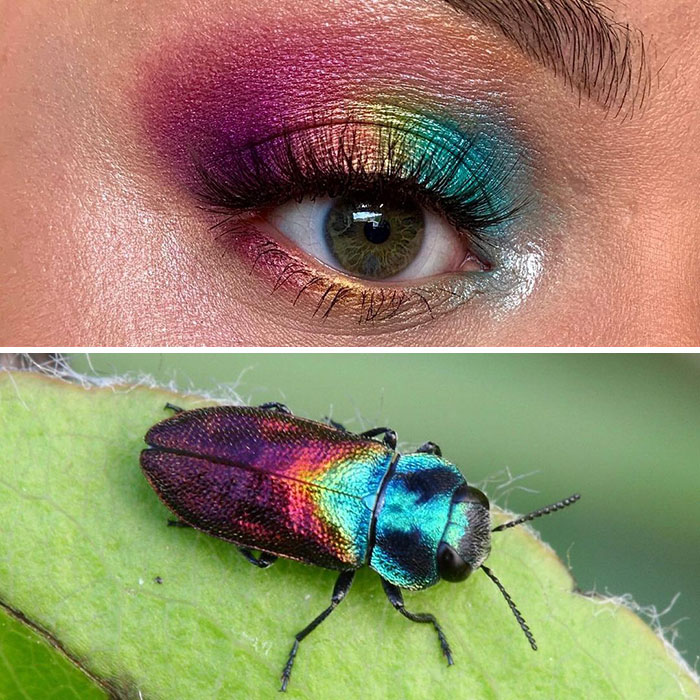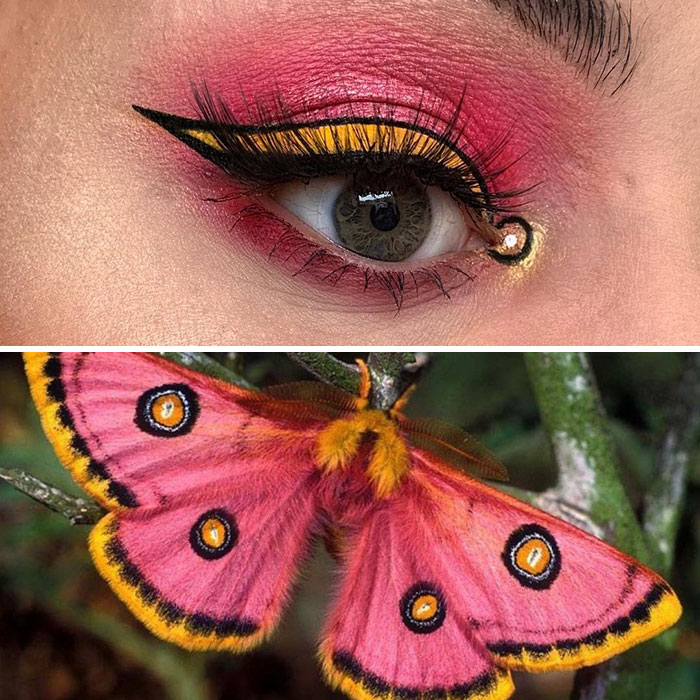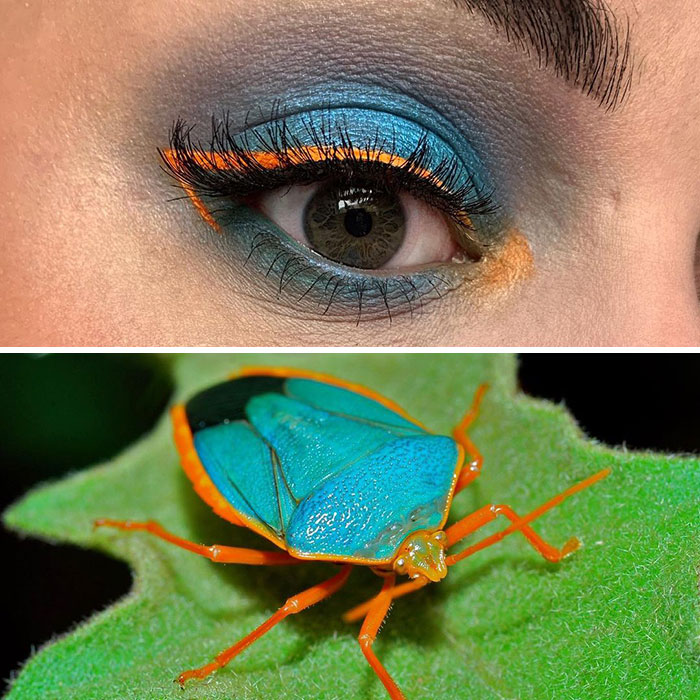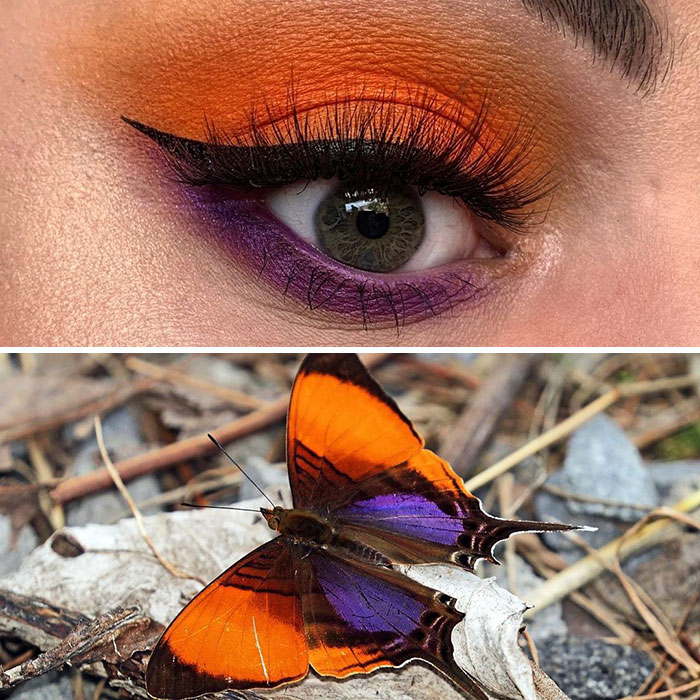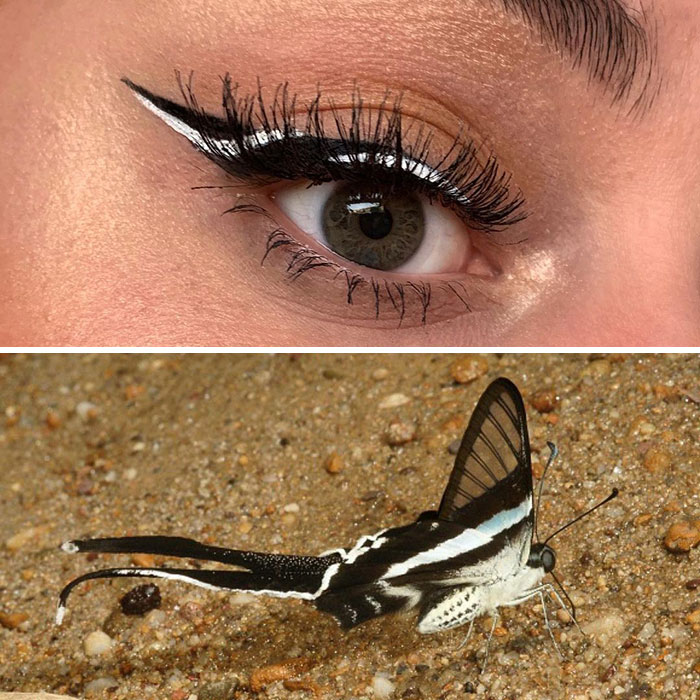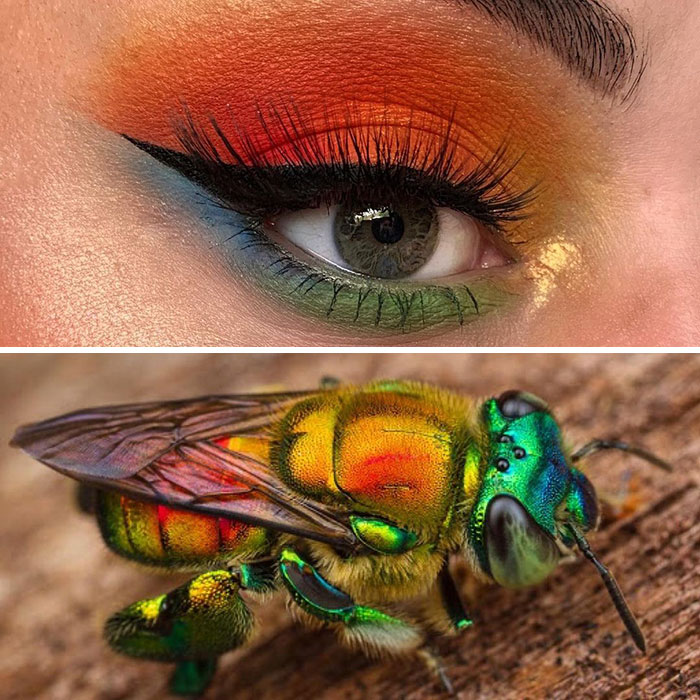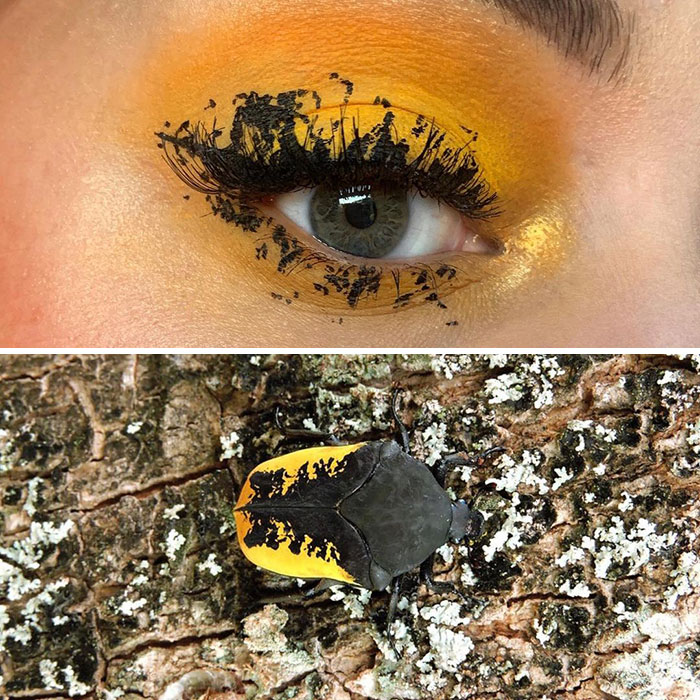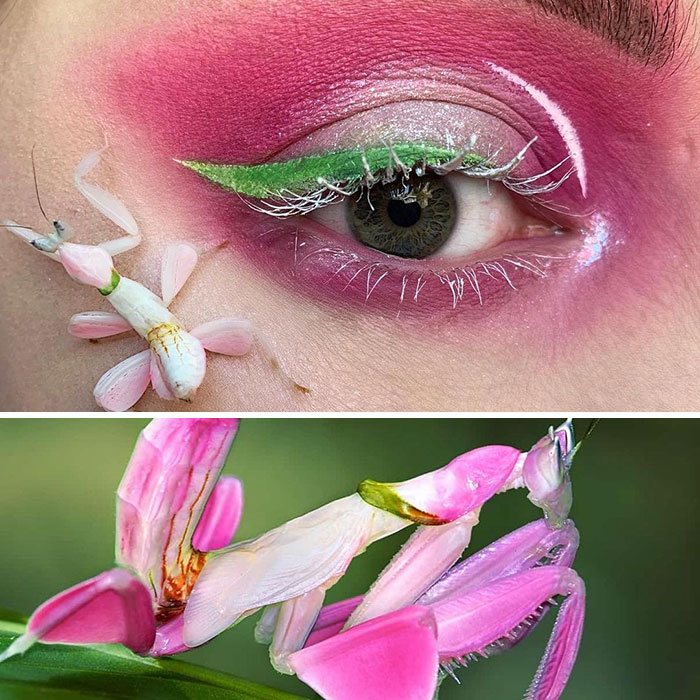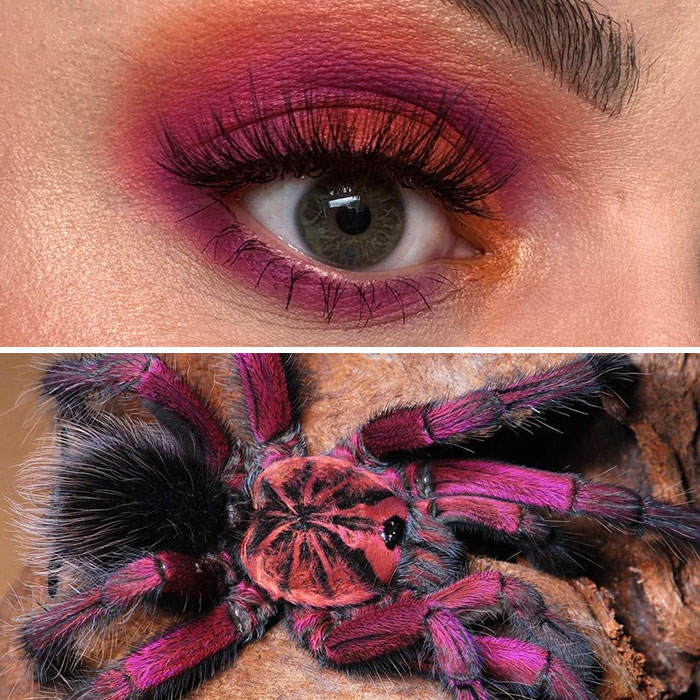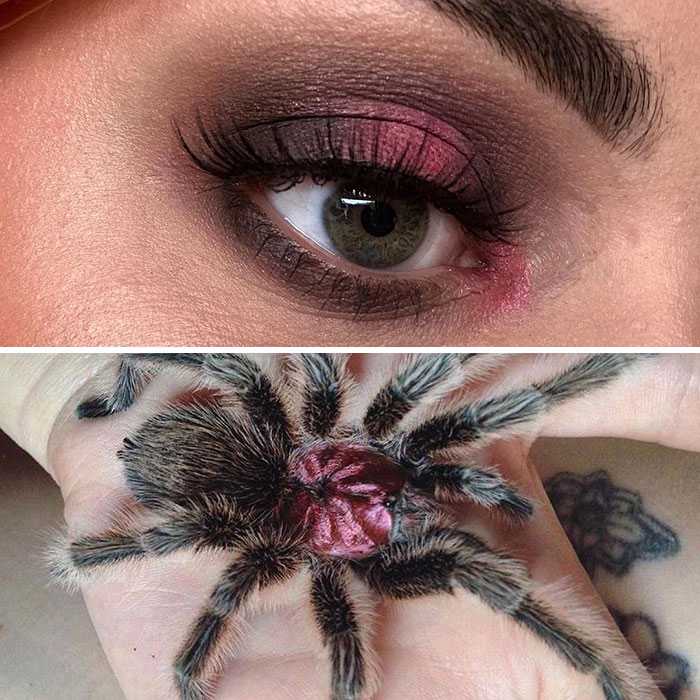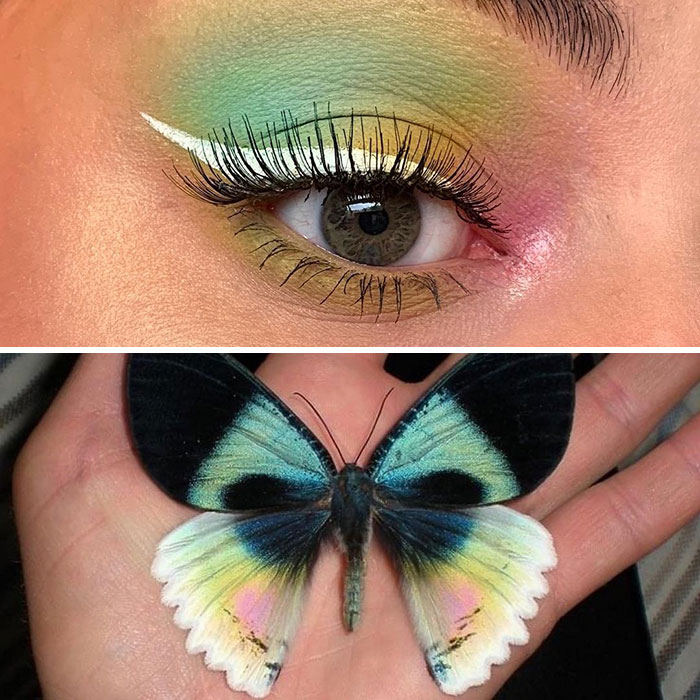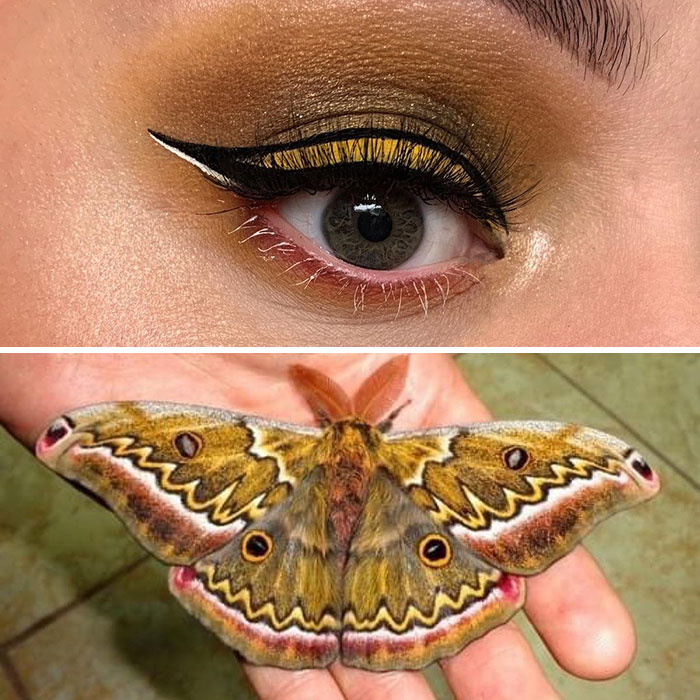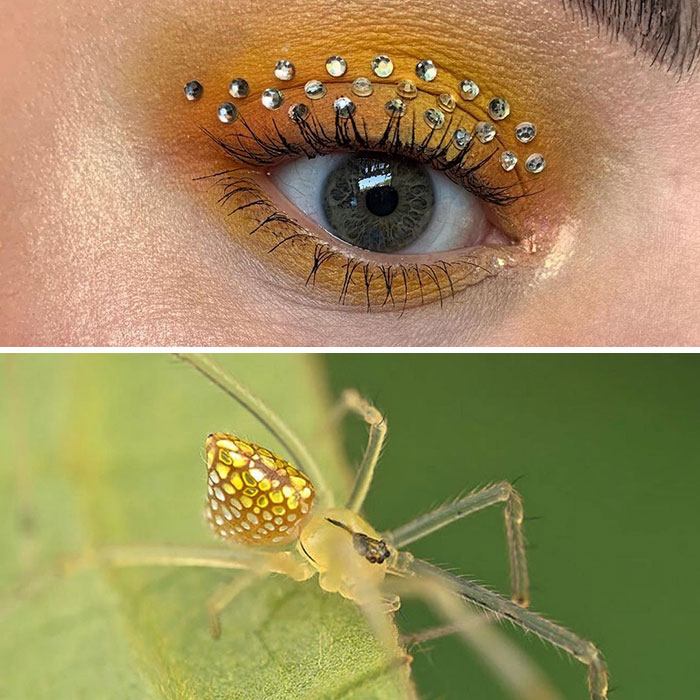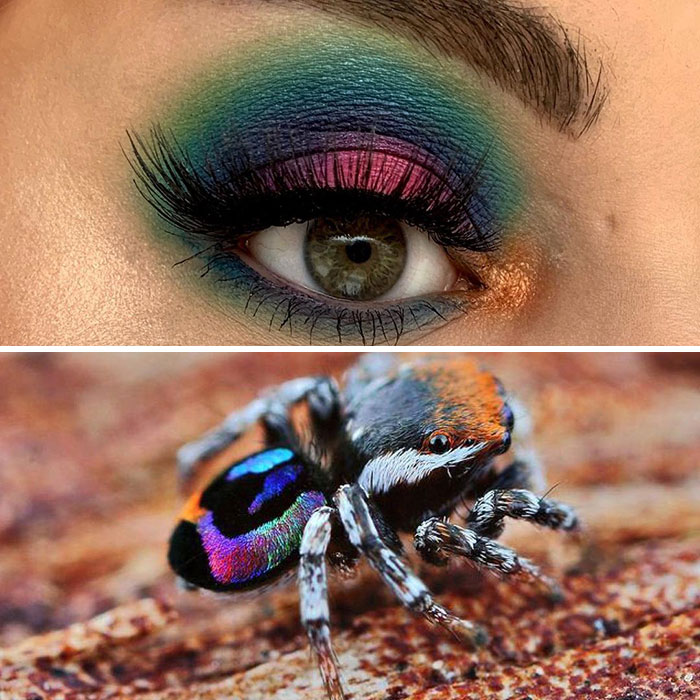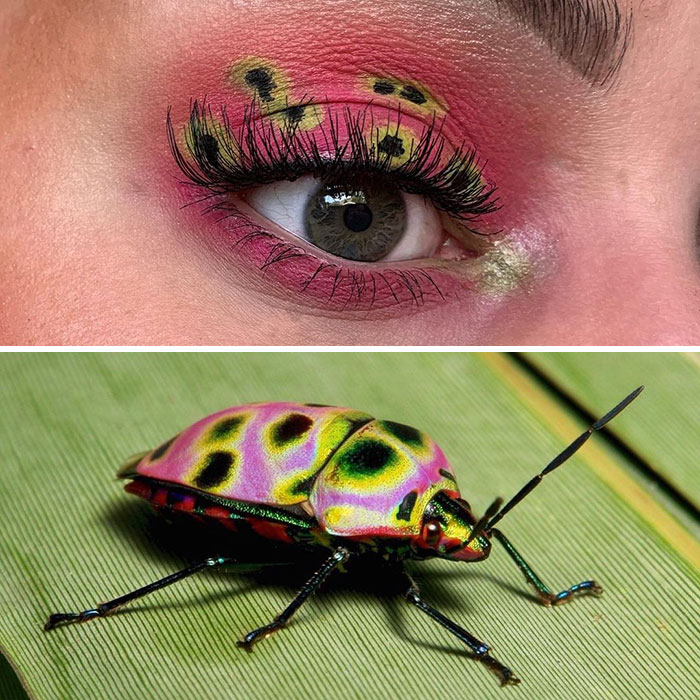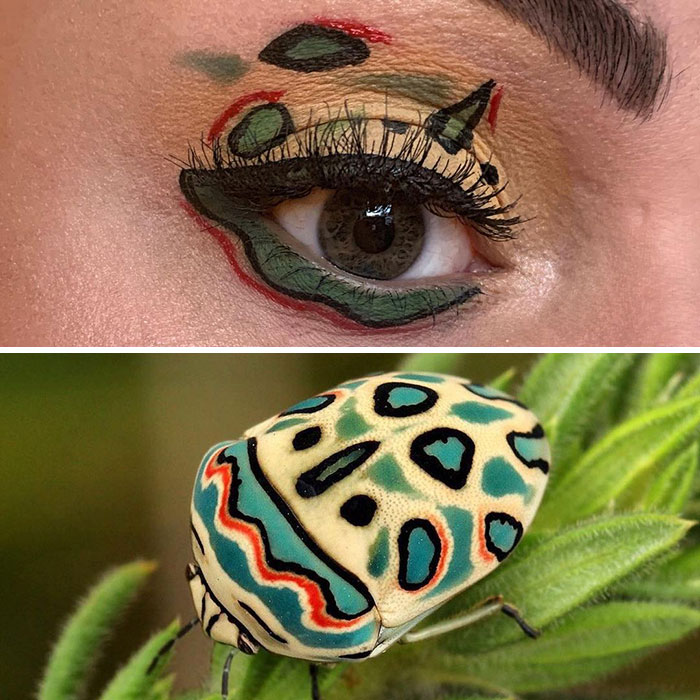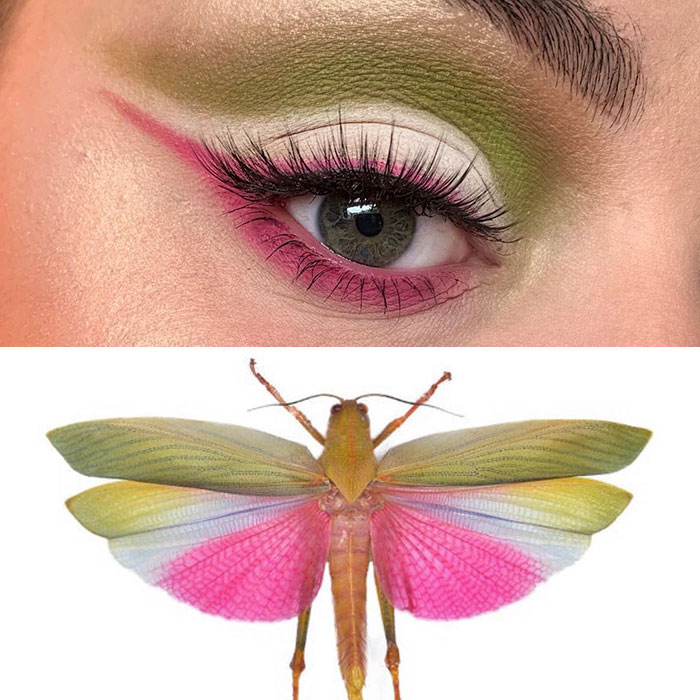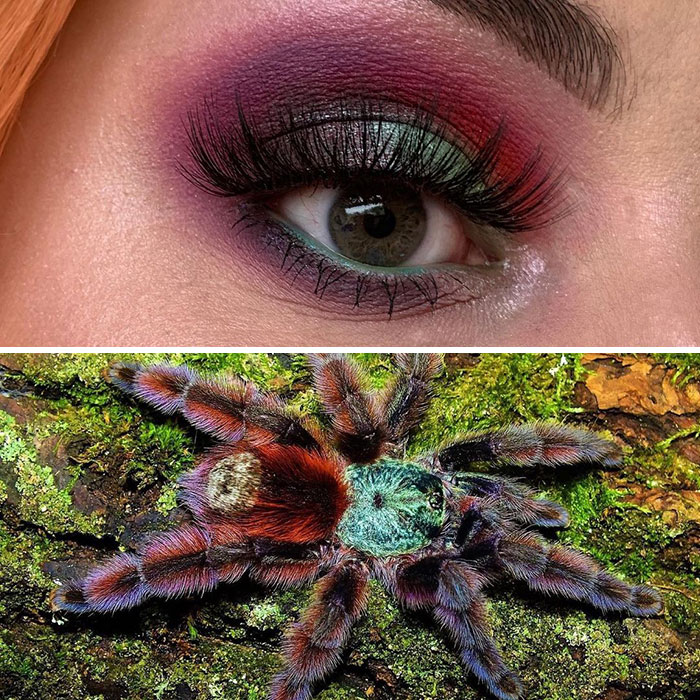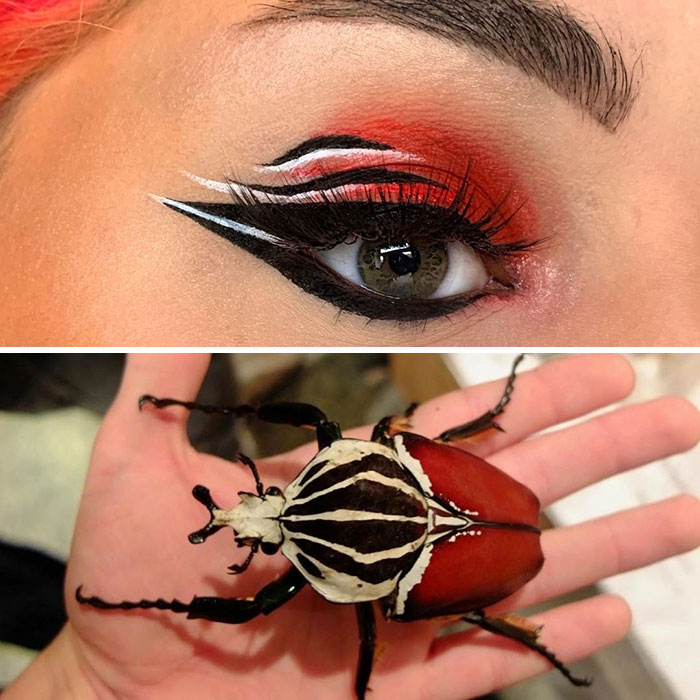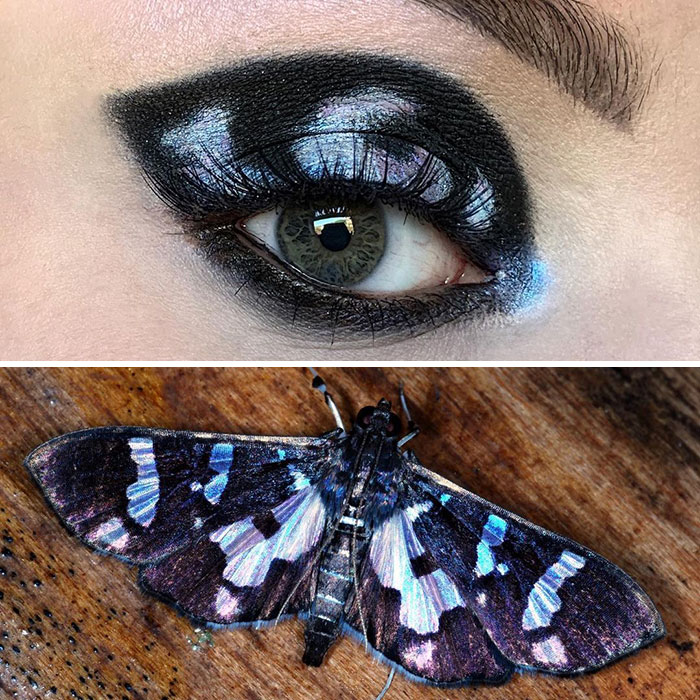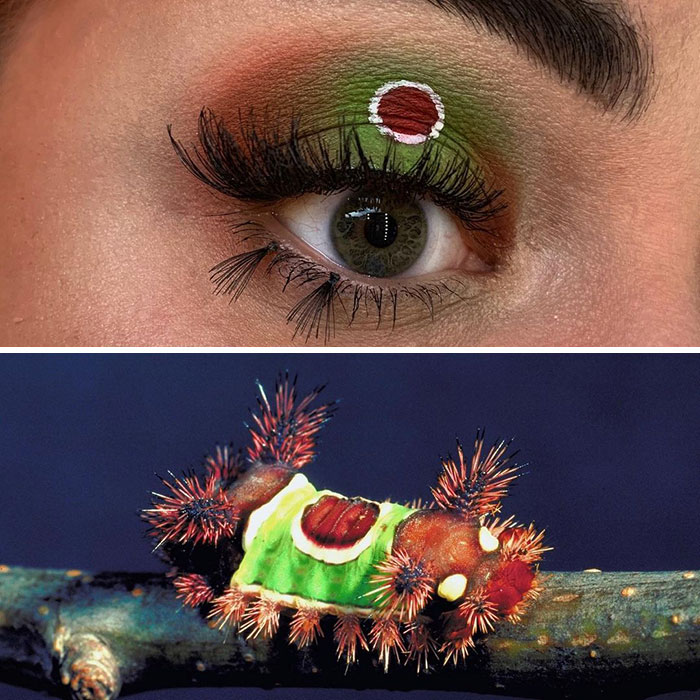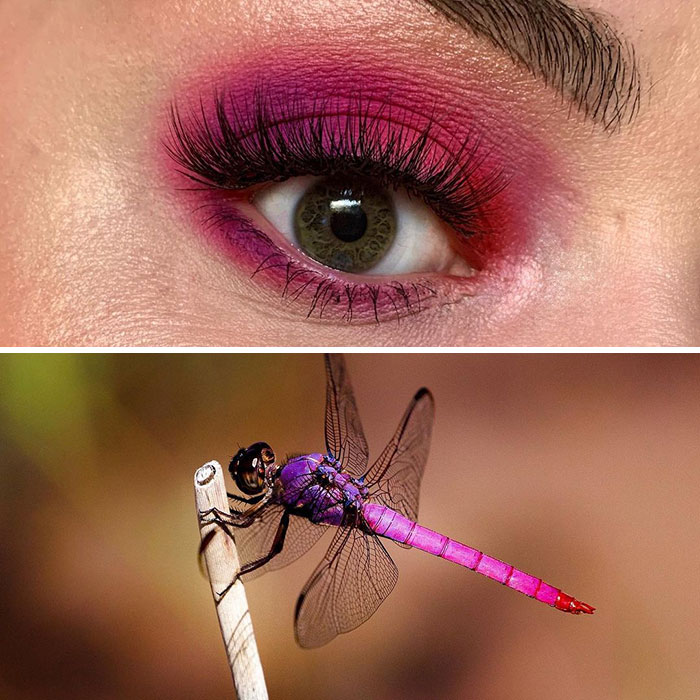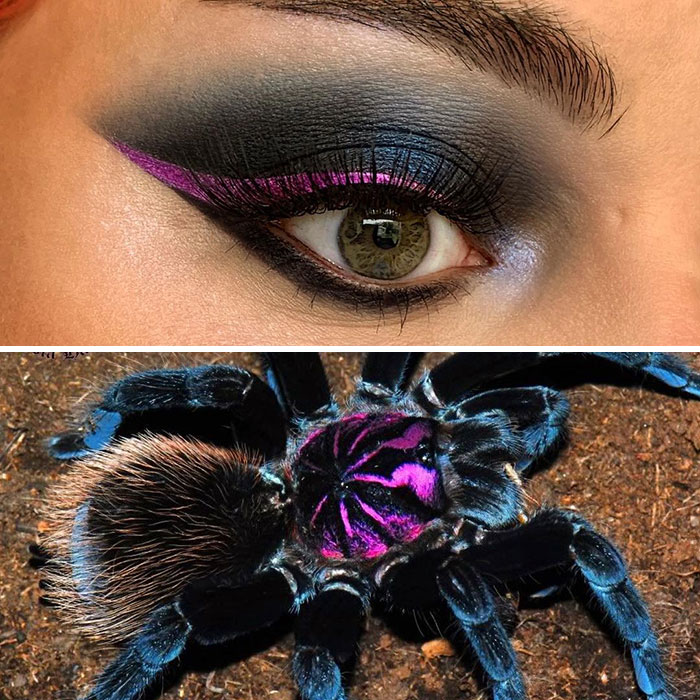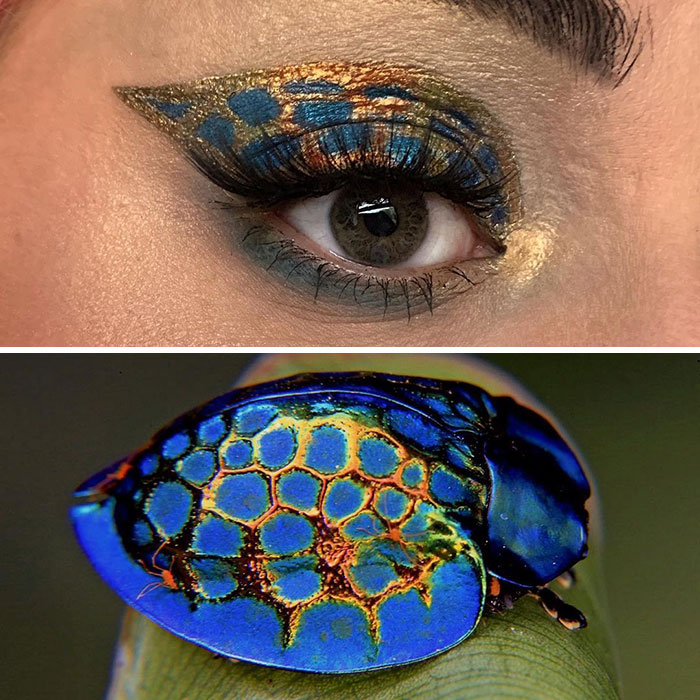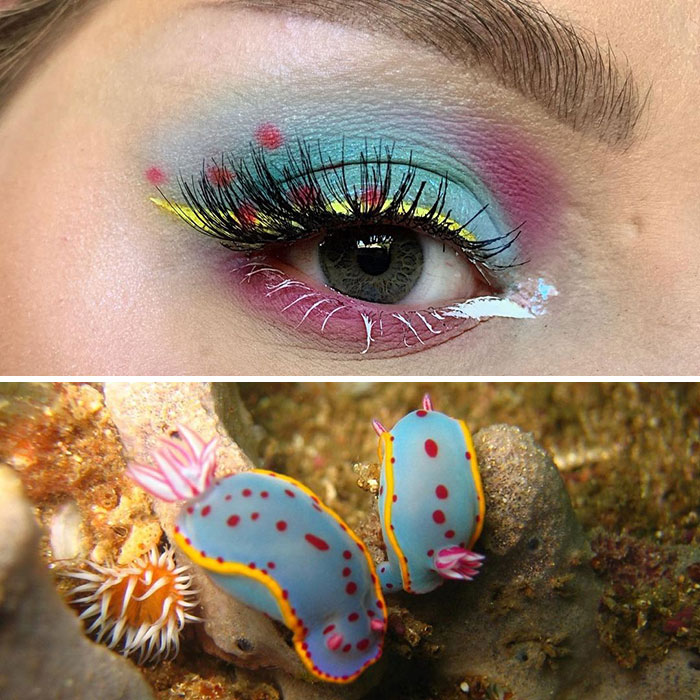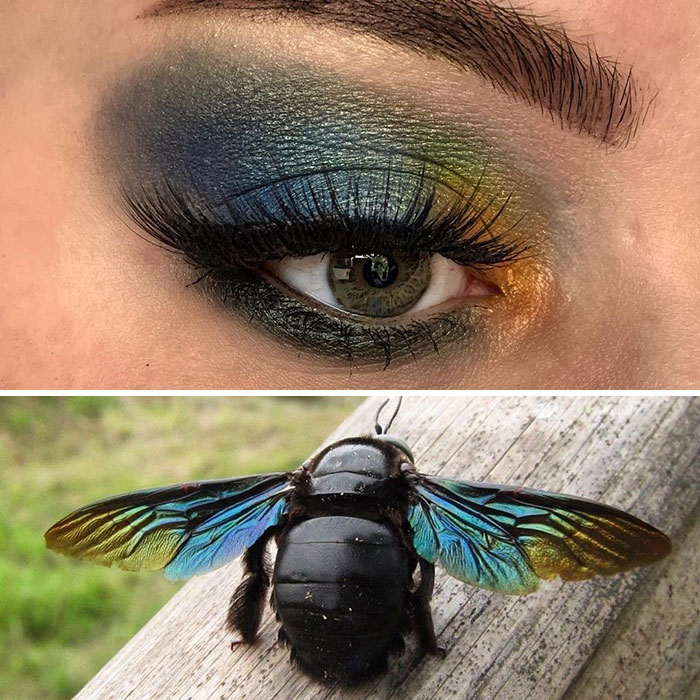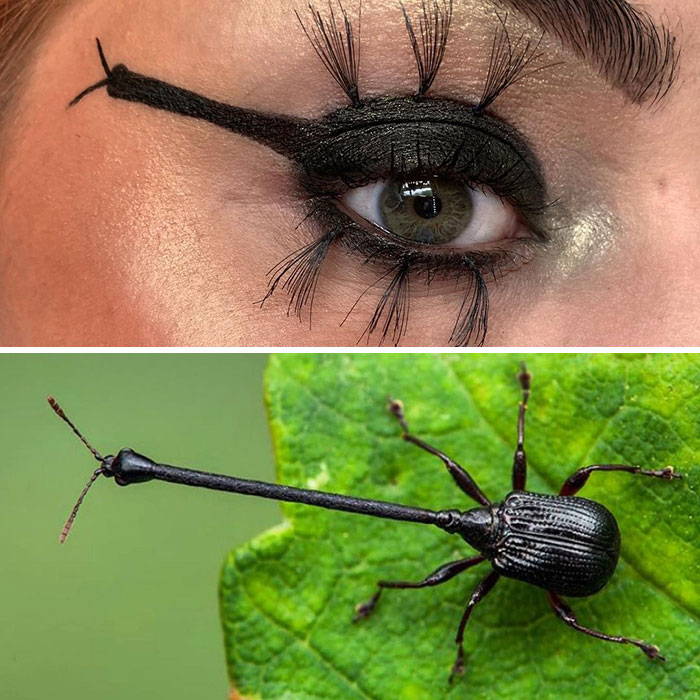Some of us might think to ourselves, why would anyone like bugs, they’re icky, but you’d be surprised just how much there is to be fascinated about when it comes to insects in general.
Sure, Animal Crossing might have already helped change your perspective on bugs, but there are surely more ways than one to convince people bugs aren’t all that bad and are actually a beautiful and meaningful part of our ecosystem.
Meet Duran Jay, an artist who does eye makeup inspired by exotic bugs, insects, and anything that fits the invertebrate category. On her dedicated Instagram page, she posts side-by-side comparisons of her colorful eye makeup designs and the bugs that inspired them.
Scroll down to check out some of her best and most mesmerizing work to date, and while you’re down there, read up on our interview with Duran and why not vote and comment on the makeup designs, or the inspirations behind them, that you enjoyed the most!
More info: Instagram
This post may include affiliate links.
Metallic wood-boring beetle (Anthaxia suzannae).
Roseate emperor (Eochroa trimenii).
Stink bug (Edessa rufomarginata).
Duran Jay is a UK-based makeup artist who’s also an avid bug enthusiast. Put them together and you’ve got yourself a unique combination that is sure to draw an eye.
“I’ve had an interest in bugs for many years, but only somewhat recently grown to appreciate the true diversity they represent,” said Duran. “I think we’re conditioned from an early age to be afraid of insects or see them as pests, but there is beauty right beneath our feet if we only take a moment to look for it.”
She continued: “With my makeup, I try to showcase some of the most beautiful species like butterflies or jewel beetles, but also give a little appreciation to those that aren’t as pretty and typically evoke a bad response, like ants or silverfish. I’ve always enjoyed being creative with my personal style and Entomakeup really just started as a bit of fun and a bit of a challenge for myself during the boredom of lockdown. I never imagined that anybody would take any interest in it or that it’d have the incredible response it’s had so far!”
Purple-stained daggerwing (Marpesia marcella valetta).
Green dragontail (Lamproptera meges).
Another rainbow to celebrate on the last day of Pride month, this time inspired by the beautiful little orchid bee (Euglossa hansoni) who gained their name due to their specifically adapted hind legs that allow them to pollinate certain orchids that cannot be pollinated by other insects. These hind legs also help them to collect fragrances (more specifically, chemical compounds called esters) from the orchids so they can use them to show off their genetic quality when attracting a mate!
Flower chafer (Gymnetis pudibunda).
The talented artist also elaborated on the process of how she goes about doing each makeup design: “Luckily for me, there are millions of insects out there, which means I’m never short of inspiration! I have a list on my phone that I add to whenever I see pictures online, or whenever my friends and followers send me new species they think look interesting.”
“From there I try to pick up on the key colours and textures that I think could translate to makeup, and I visualise an image in my head. Some are quicker to materialise than others—a couple of my looks have taken a matter of minutes to complete and the longest one has taken about 1.5 hours, from looking at a picture to posting the finished look.”
Orchid mantis (Hymenopus coronatus) feat. my very own Trixie.
Pamphobeteus sp. duran.
The Chilean tarantula (Grammostola porteri) belongs to the Grammostola genus, which contains 21 species of New World tarantula. New Worlds are those that are native to the Americas (in this case, South America) and are typically recommended as the best choice for beginner hobbyists due to their very mild venom that poses little threat to us humans.
Uraniid moth (Alcides aurora).
Giant Peruvian silkmoth (Copaxa medea).
Like any form of art, this one comes with its own challenges, as Duran explains:
“I only buy cruelty-free brands and work on a tight budget, so I’m pretty limited on my materials and typically only use a handful of products for all of my looks. I’m imaginative, but I’m not a professional makeup artist by any stretch of the imagination, so it can be quite challenging to make the ideas in my mind come to life.”
“It’s also a little daunting sometimes to post on a platform that is dominated by technically skilled and trained [makeup artists] (especially given the subject matter of my posts!). When the page started gaining a bit more traction, I expected to have to deal with hate about my lack of technical skill or about how ‘gross’ insects are, but people have generally been really positive and really supportive. It’s been a truly wonderful experience and I feel really lucky.”
Mirror spiders (Thwaitesia argentiopunctata) use reflective guanine to display their unique colouration, which is actually the same thing found in our shampoo that gives it that pearly iridescent sheen.
Since Pride month is upon us, it only seems right to create at least one rainbow look! Though this perhaps isn’t the typical spectrum we’re used to seeing, at only 5mm this little jumping spider (Maratus robinsoni) is known to researchers as ‘nature’s smallest rainbow’. In fact, it is the only known example of a spider that deploys all colours of the rainbow to attract a mate, all from those tiny iridescent scales on his lil bug butt.
Shield-backed jewel bug (Poecilocoris rufigenus).
Finally, the highly-requested and long-awaited Picasso bug (Sphaerocoris annulus).
Peruvian grasshopper (Lophacris cristata).
The Antilles pink toe (Caribena versicolor, formerly Avicularia versicolor) has to be one of my favourite tarantulas. Although they’re readily available and pretty commonly kept as pets due to their docile nature (and pretty colours ofc), I still consider it a ‘dream T’ and hope to own one some day soon (when I find the space!).
Now that Duran’s done upwards of 70 unique designs, we’ve asked her about any favorites in the bunch. She had this to say:
“For me, I think my favourites are the tarantula looks, as they’re the ones that tend to get the biggest response. I get a lot of people reaching out to tell me they didn’t realise spiders could be so pretty and that I’ve helped them start to move past their fear, which is really what the page is all about!”
“I also have a huge soft spot for moths, and my look based on the beautiful pink and yellow roseate emperor is something I’d happily wear on a day-to-day basis. The ones that push me to try colour combinations I wouldn’t usually go for (like orange and purple, or pink and green) are really fun too.”
Goliath beetle (Goliathus goliathus), one of the largest insects on the planet.
Crambid moth (Desmia bajulalis).
The saddleback caterpillar (Acharia stimulea) gains its name from its unique aposematic colouring, used primarily to alert potential predators that they are toxic (and basically wouldn’t make a very nice dinner).
Roseate skimmer (Orthemis ferruginea), my first entry from order Odonata. So many bug families and orders still unexplored on this page, which is terribly exciting really! The inspiration feels endless.
Amazon blue bloom tarantula (Xenesthis intermedia).
The imperial tortoise beetle (Stolas imperialis) belongs to the Cassidinae subfamily, which is made up of tortoise and leaf-mining beetles that are quite special because they’re one of the 1% of all insects that typically display maternal instincts and care for their larvae! Werk lil bug mamas.
Hypselodoris bennetti.
There is also some exciting news to be had as Duran told Bored Panda that she’ll soon be taking part in her very first physical exhibition. While she can’t disclose any details just yet as they aren’t finalized yet, you are more than welcome to follow her Instagram to find out more about it.
But before you go, tell us some of your favorite bugs, or perhaps you have suggestions for Duran on what insects she could cover next? Do this in the comment section below!
Happy World Bee Day! There are at least 5700 species of bee in the Apidae family, and the Indian black carpenter bee (Xylocopa tenuiscapa) is a perfect little reminder that they’re not all the classic black and yellow fuzzy friends we’re so used to seeing.
If you know, you know…

